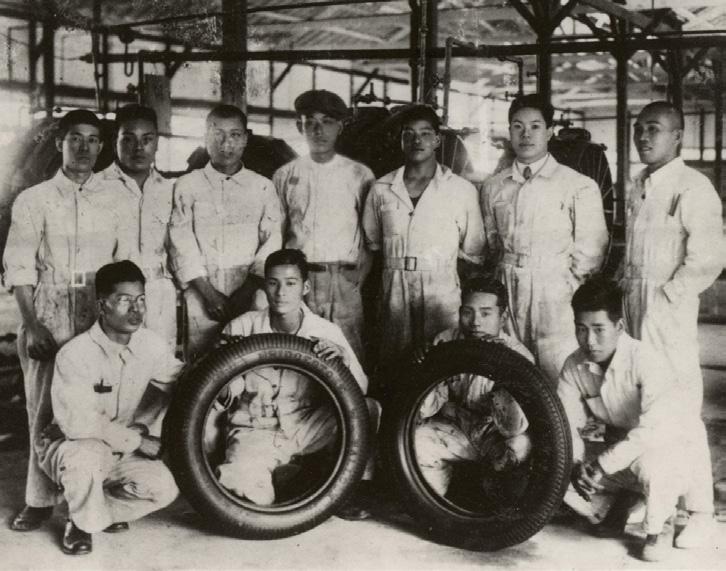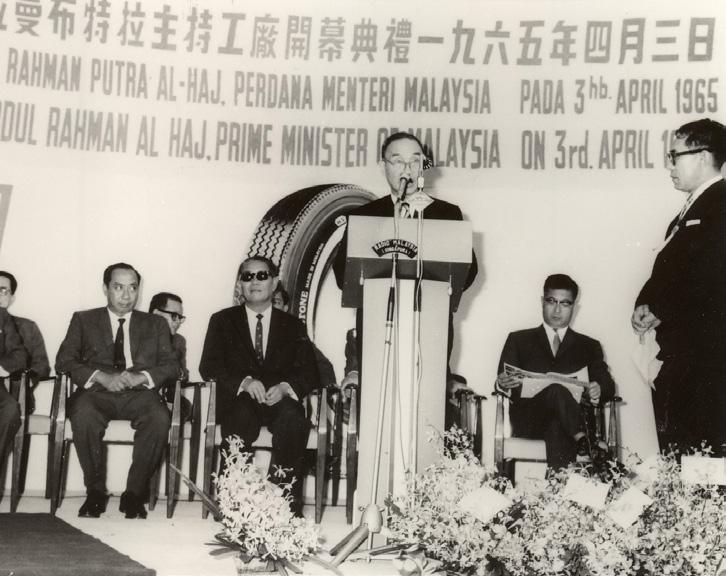
4 minute read
Milestones - Bridgestone - from Karume to global powerhouse
FROM KARUME TO GLOBAL POWERHOUSE
Bridgestone has enjoyed an incredible 90-year journey so far
Shojiro Ishibashi in many ways was ahead of his time. He strongly believed a simple profit seeking business will never thrive, but a business that contributes to its society and country will be forever profitable. With his philosophy at the core of the business he founded in 1931 – Bridgestone Tire Co, Ltd – it is no surprise that 90 years later his legacy is as one of the industry’s most iconic names, now employing approximately 140,000 teammates around the globe with operations in more than 150 markets. Global expansion was a vision even at the company’s inception, with Shojiro naming it from a translation of his own name “Ishibashi” or “Stone Bridge”, and then reversing the order because he felt it sounded better. Only three years later the first dedicated Bridgestone factory was opened in Kurume City, in the Fukuoka Prefecture, with the company eventually expanding to have a total of 165 manufacturing plants today. 1935 saw a significant investment into diversified products, with Bridgestone producing its first golf ball that year, and then bicycles in 1946. In the 1960s, there came an increased focus on global expansion with the establishment of a plant in Singapore to better serve this market and the then Federation of Malaya – key markets for Bridgestone exports at the time. The experience gained in the process underpinned the globalisation of the busines across the subsequent decades. With the company’s profile growing, in 1968 it introduced its mission of ‘Serving Society with Superior Quality’ – shaped by Shojiro’s philosophy and still in place today. It was also the year Bridgestone earned the prestigious Deming Prize for excellence in quality management. In the following decade, an icon was born with the introduction of the Potenza high-performance tyre by way of the RE47 in 1978, which boasted performance similar to a racing tyre for road vehicles. More than 40 years later, Potenza remains one of the mainstays of Bridgestone’s line-up and is still loved by enthusiasts around the world, as well as being a go-to for car manufacturers. Throughout the 80s, preparations were made for substantial growth, including the investment into the Australian market at the start of the decade with the acquisition of Uniroyal Tyre Company’s plants and the creation of Bridgestone Australia. Then came the introduction of a new corporate logo in 1984, and the adoption of the Bridgestone Corporation name. Made up of a ‘rising arrow’ to signify the Bridgestone’s never-ending ambition and a ‘hot triangle’ to signify burning passion, this logo has remained the company’s insignia ever since with a few modernisations along the way. 1988 saw a move that is now referred to as Bridgestone’s ‘Foundation 2.0’ – the merger with the Firestone Tire and Rubber Company which saw the Bridgestone Corporation become one of the top three manufacturers in the market. The brand’s global presence continued to grow through the 1990s and the time soon came for it to flex its muscles in the global motorsport arena, becoming a supplier to Formula One in 1997 with McLaren. This was the start of 14 years in the sport from 1997-2010, with Potenza-shod cars contributing to a total of 175 Grand Prix victories, 168 pole positions and 11 Drivers’ Championship and Constructors’ Championship titles. Following its time in F1, Bridgestone saw the potential in the World Solar Challenge as a new platform to contribute to the development of the mobility, society and environmental technologies segments as well as young engineers and in 2013 became the naming rights partner of the 3,000km event – a deal which will remain in place until the company’s centenary following a 10-year extension at the end of the last event. The Bridgestone Group has positioned the 90th anniversary of its founding as an important milestone as it advances toward its 100th anniversary and beyond – the first of many stepping stones as the company looks to realise its Mid-Long Term Business Strategy and work towards an ambitious vision for 2050. Global Chief Executive Officer and Representative Executive Officer, Shuichi Ishibashi – who assumed the position in March last year – acknowledges that the company has evolved significantly over nine-decades, but says there are core values that will remain into the future, echoing the foresight of the founder. “Bridgestone has continued to overcome countless challenges, even in the face of uncertainty and turmoil, as it has proceeded to gain experience, learn, and grow into a stronger company,” Shuichi said. “I have great appreciation for our customers, business partners, community members, and various other stakeholders who have supported Bridgestone throughout its long history. “We will continue to place sustainability at the core of our management as we advance past our 90th anniversary and seek to grow into a sustainable company together with society and customers.” As the company looks towards its centenary, Shojiro’s sentiment of giving back to the community is alive and well, with sustainability and society at the core of its future.
For more information, see www.bridgestone.com.au













